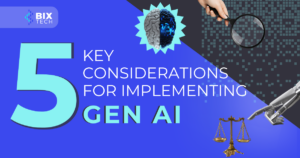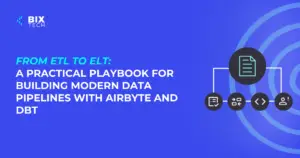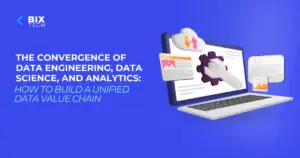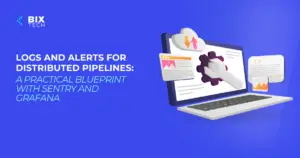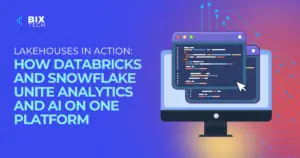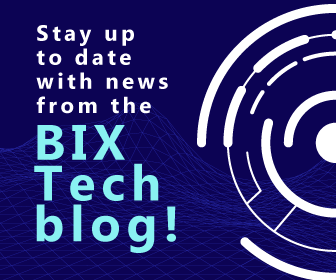Databricks Explained: The Modern Data Platform Powering Analytics and AI

Sales Development Representative and excited about connecting people
In today’s data-driven world, organizations are seeking robust solutions to handle massive volumes of information, extract actionable insights, and accelerate AI innovation. Enter Databricks—a platform that’s taken the analytics and machine learning world by storm. Whether you’re a data scientist, business analyst, or IT leader, understanding Databricks can be a game-changer for your organization’s efficiency and competitive edge.
In this comprehensive guide, we’ll demystify Databricks, explain why it’s become the go-to platform for modern data teams, and offer practical insights and examples to help you decide if it’s right for your business.
What is Databricks?
Databricks is a cloud-based unified data analytics platform designed to simplify and supercharge everything from data engineering to machine learning and business intelligence. It was founded by the creators of Apache Spark, and it builds on Spark’s capabilities by providing a collaborative, scalable, and fully managed environment for end-to-end data workflows.
Core Features of Databricks
- Unified Analytics: Databricks integrates data engineering, data science, and business analytics in a single platform, removing silos between teams.
- Scalability: Built on cloud infrastructure, it effortlessly handles everything from gigabytes to petabytes of data.
- Collaboration: Interactive notebooks and shared workspaces enable real-time collaboration across teams.
- Machine Learning: Robust ML lifecycle management, from data prep to training and deployment.
- Delta Lake: Enhanced data reliability and performance with ACID transactions and scalable metadata handling.
Why Are Organizations Choosing Databricks?
1. Speed and Simplicity
Traditional data platforms often require complex setups and significant maintenance. Databricks, on the other hand, abstracts away much of the infrastructure, letting your team focus on data and insights, not servers and configurations.
2. Seamless Data Lakehouse Architecture
One of Databricks’ standout innovations is the data lakehouse—a modern architecture that combines the low-cost storage of a data lake with the management and performance features of a data warehouse. This means you can run BI, analytics, and AI workloads on the same data, without duplicating it.
Curious about the future of unified analytics? Check out our deep dive on Data Lakehouse Architecture: The Future of Unified Analytics.
3. End-to-End Machine Learning
With native support for MLflow (an open-source platform for managing the ML lifecycle), Databricks allows teams to build, track, and deploy machine learning models efficiently—all in one place.
4. Built-in Collaboration
Data is a team sport. Databricks’ interactive notebooks (supporting Python, SQL, Scala, and R) and integrated version control make it easy for distributed teams to work together, share code, visualize results, and iterate quickly.
How Does Databricks Work?
Databricks runs on top of major cloud providers (AWS, Azure, Google Cloud), offering an environment where you can:
- Ingest Data: Connect to sources like databases, data lakes, and APIs.
- Process Data: Clean, transform, and enrich data using Spark-based pipelines and Delta Lake.
- Analyze Data: Use SQL, Python, or other languages for business intelligence and analytics.
- Build Models: Train and deploy machine learning models with ML integrations.
- Automate Workflows: Schedule jobs and orchestrate data pipelines for continuous delivery.
Practical Use Cases for Databricks
Let’s look at how businesses are leveraging Databricks today:
1. Retail: Personalized Recommendations
A global retailer can ingest transaction and customer data into Databricks, run feature engineering at scale, and train recommendation models that boost sales and customer loyalty.
2. Healthcare: Predictive Analytics
Healthcare providers use Databricks to analyze clinical data, detect anomalies, and predict patient outcomes—improving care and reducing costs.
3. Financial Services: Fraud Detection
Financial institutions process billions of transactions in real time. With Databricks, they can identify suspicious patterns using streaming analytics and machine learning, reducing fraud and ensuring compliance.
For a closer look at how AI and data analytics are revolutionizing business, read How AI-Powered Data Analysis Accelerates Smarter Decisions for Your Business.
Databricks vs. Traditional Data Platforms
| Feature | Traditional Data Warehouse | Data Lake | Databricks (Lakehouse) |
|---|---|---|---|
| Storage Cost | High | Low | Low |
| Data Structure | Structured | All types | All types |
| Performance | High for SQL | Low | High |
| ML Compatibility | Limited | Medium | Excellent |
| Collaboration | Limited | Medium | Excellent |
Getting Started: Is Databricks Right for Your Business?
Here are a few questions to ask:
- Do you struggle with data silos and slow analytics?
- Is your team juggling multiple tools for ETL, BI, and ML?
- Do you want to scale AI and analytics, but are limited by legacy systems?
If you answered “yes” to any of these, Databricks could be a strategic fit.
Best Practices for Maximizing Databricks
- Adopt Delta Lake: Use Delta format for reliable, performant data pipelines.
- Encourage Cross-Functional Collaboration: Leverage notebooks and shared workspaces.
- Automate with Jobs and Workflows: Streamline recurring ETL and ML tasks.
- Monitor and Optimize Costs: Take advantage of autoscaling and cluster management.
Databricks in the Evolving Data Landscape
The data landscape is evolving rapidly, and platforms like Databricks are at the forefront of this transformation. By unifying analytics, machine learning, and business intelligence, Databricks empowers organizations to innovate faster and respond to new opportunities with agility.
For an in-depth exploration of how data science is revolutionizing business, don’t miss Data Science Demystified: How Data Science is Powering Business Success in 2025.
Final Thoughts
Databricks isn’t just another analytics tool—it’s a modern platform that bridges the gap between raw data and real business value. By integrating robust analytics, machine learning, and collaborative workflows, it’s helping organizations unlock the true potential of their data.
Ready to take your data strategy to the next level? Exploring Databricks could be the smartest move your business makes this year.
Want to learn more about building a future-ready data platform or need guidance on modern data strategies? Explore our blog for more insights and practical guides on data science, AI, and digital transformation.



